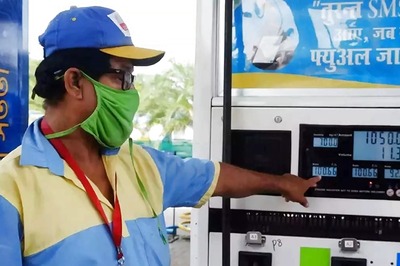
views
The motorcyclists honk incessantly on the empty path. Following a slippery, rain-soaked mountain trail, winding through a dense Sal forest, we are heading into the 'liberated zone' — a part of the Maoist fiefdom in the Saranda jungles of Jharkhand's restive West Singhbhum district.
The region is impregnable to outsiders. The motorcyclists, who ferry the Forbes India reporter and photographer, are trusted intermediaries who had sought prior permission for entry from the local rebel commander. They know the rules all too well: If you are driving into Maoist country, you honk or play music loudly to tacitly announce your arrival to the rebels, who are mistrustful of outsiders. Or you risk being mistaken for a foe and toasted by one of their remote-controlled landmines littered across the rugged terrain.
After a long bone-crunching ride, we arrive in Baliba, a hardscrabble village seemingly in the heart of the rebel movement. In a post-midnight anti-guerilla operation led by paramilitary forces and the local police in late June, a local man — Mangal Honhaga, a 35-year-old farmer — was gunned down. About half a dozen others, suspected of being Maoists, were arrested. A rebel training camp near the village, which the authorities say was run by Samarji, the notorious zonal area commander of the banned CPI (Maoist), was busted. A cache of weapons and bagfuls of Naxalite literature were seized in the raid.
In the pouring rain, shoals of local villagers gather under a large, shaded tree to meet us. It is impossible to distinguish a rebel from a villager in the swelling crowd. No one is armed — at least not openly. A baby-faced man sidles up to us, claiming to be a representative of CPI(M). He closely examines our press IDs and then shows us around the village.
Baliba, cut off from the outside world, seems lodged in a time warp. The village has no electricity and no health centre. There is a school but no teacher. Everywhere there are malnourished children with distended bellies. We go around the village houses damaged in the raid, which involved hundreds of policemen who went from house to house in search of weapons.
Many villagers say they were hauled up by policemen for interrogation. The questions followed a familiar pattern: Are you a Maoist? Have you seen a Maoist? Have you been to their camp for armed training? Some were picked up and taken away in a helicopter. No one knows where.
The residents of Baliba deny being Maoist sympathisers, but concede that guerrillas often swoop in from the nearby jungles for nightly rests and meals. They offer them food because they don't have a choice. Would you oppose militants wielding guns if they entered your house, they ask us.
The majority feels trapped between the state and the Maoists. However, they are more suspicious of the state than the Maoists. Such raids, many believe, are meant to vacate and usurp their lands for large mining corporations lusting after the region's rich iron-ore deposits. Naxalites are like ants
attempting to drive away elephants.
Manjiri Honhaga, Mangal's widow, stands quietly among the crowd, swaddled in a shawl. She clutches her three-month-old baby, sick and emaciated, with a dim chance of survival. Her brother-in-law, Dosara Honhaga, is angry. Authorities say Mangal was killed in a cross fire with the rebels. Dosara and other villagers claim he was murdered. "Now you know why people are becoming Naxalites," he says.
An invisible conflict, raging across vast swathes of the countryside, is eating away at the innards of modern India. The country's future rests on its outcome.
Naxalites have foothold in 23 of India's 28 states. They are most active in a loosely contiguous mineral-rich territory known as the 'red corridor' that spans across Chhattisgarh, Jharkhand, Orissa, and Bihar. In China today, Mao Zedong is a relic of a bygone era. But in this remote jungle terrain, Mao is the guiding light for armed rebels.
Prime Minister Manmohan Singh has repeatedly warned that India's economy risks losing out on sustained growth unless the red corridor is freed from the grips of Maoism.
At stake are investments worth $80 billion, which can be secured with access to the region's rich deposits of iron ore, coal, bauxite and manganese, says the London-based investment banking group Execution Noble. The Federation of Indian Chambers of Commerce and Industry says the conflict threatens to "stall industrial-investment plans just when India needs to ramp up its industrial machine".
The home ministry estimates that between January 2007 and June this year, Naxalites attacked 1,241 "economic targets" — damaging power plants, roads, mines, railway property, telephone towers, and electricity transmission lines across nine states. Jharkhand is endowed with India's richest mineral wealth. Naxalites have a presence in 18 of its 24 districts, mostly in regions with the highest concentration of mineral wealth.
Doing business in a conflict zone is, of course, risky. But the risks can be mitigated by winning over local support. Or so claims Essar Power, which last year began constructing its ambitious TORI power project — a 2,000 MW power plant at Chandwa in Latehar district. Besides CPI(M), about half a dozen other armed gangs operate in this region.



















Comments
0 comment